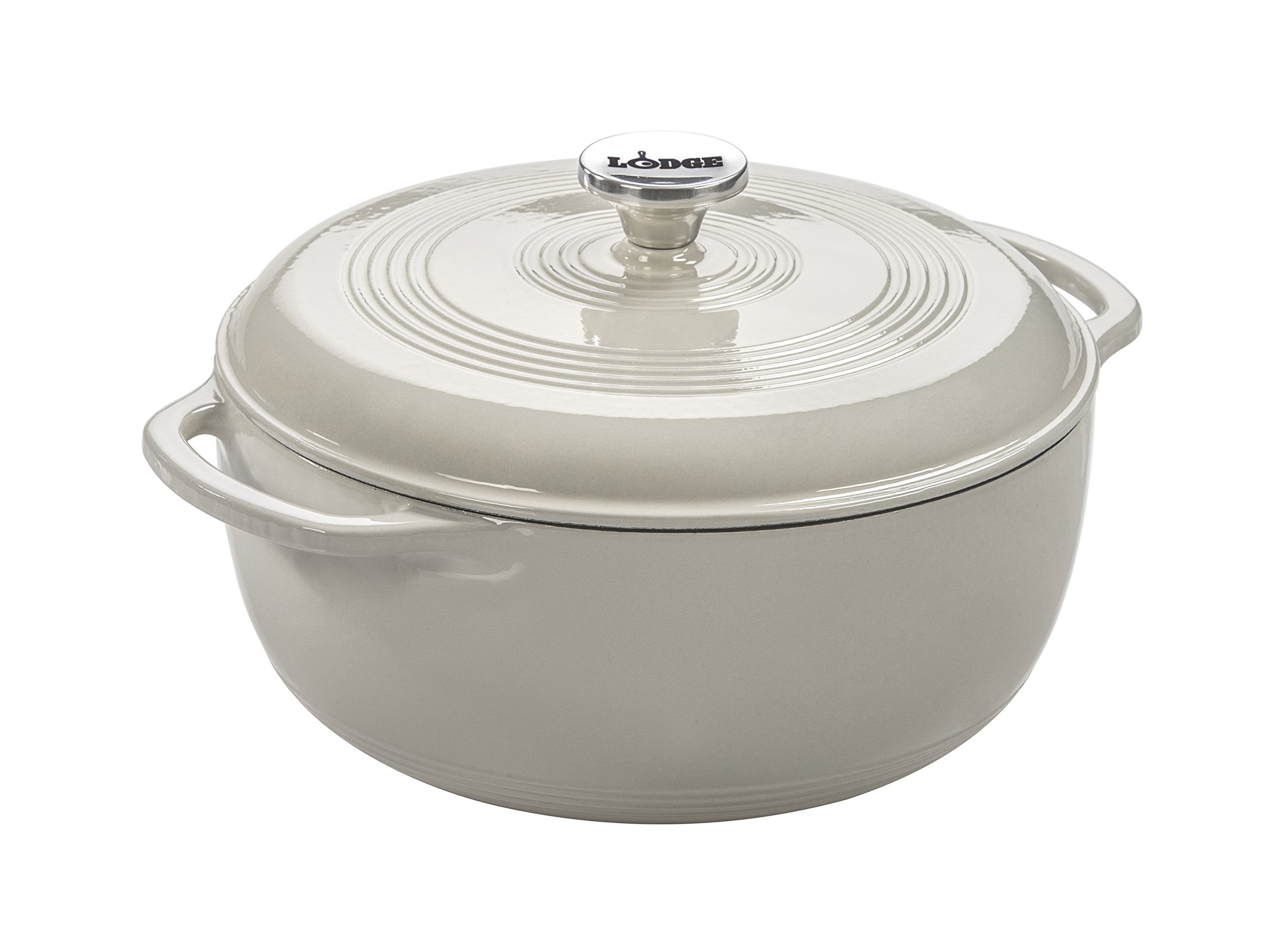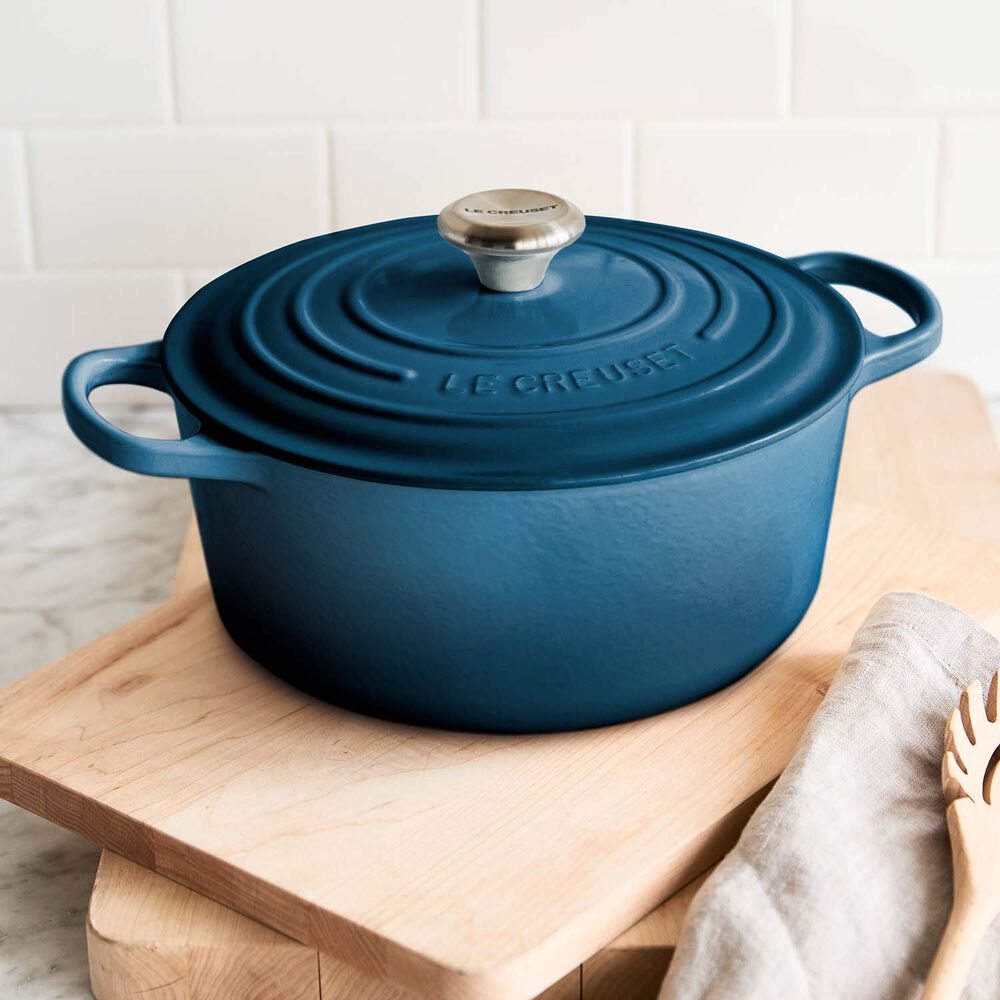What’s not to love about Dutch ovens? They come in bright, beautiful colors; they can go straight from the oven to the tabletop; and you can braise, deep-fry, or even bake bread in them.
This kitchen workhorse is usually a sign of a serious cook, and lots of recipes call for using a Dutch oven — but then what is a French oven? Are a Dutch oven and French oven the same thing with different names? This question will be answered through this article What’s the difference between a Dutch Oven and a French Oven? of Hearthcook!
What is a dutch oven?
During the 17th century, the Dutch revolutionized metal casting techniques by introducing sand molds instead of the previously used clay molds. This innovative approach paved the way for the production of iron cookware, giving birth to the iconic Dutch oven. The term “Dutch oven” refers to a large pot, historically crafted from raw cast iron, which develops a naturally nonstick surface when seasoned properly.

Dutch ovens are renowned for their substantial weight, making them durable and capable of withstanding high temperatures. They are incredibly versatile, suitable for use on both stovetops and in ovens. While they excel in moist cooking methods like braising, soups, and stews, Dutch ovens are not limited to these techniques. They can also be utilized for various other cooking methods, including baking bread and even deep-frying.
What is a French Oven?
Indeed, if you find similarities between the Dutch oven and the French oven, you are absolutely correct. In essence, a French oven is a variation of the cast iron Dutch oven that features a porcelain enamel coating. Originating in the early 1900s, the introduction of the enamel surface to the Dutch oven significantly enhanced its non-stick performance while retaining its durability and versatility. Known locally as a cocotte, the French oven became the ideal cooking vessel for popular recipes of the era, such as boeuf bourguignon, where the meat would be seared on the stovetop before transferring the dish to the oven for the final cooking process.

The enamel coating also eliminated the need for seasoning, simplifying the maintenance of these newer Dutch ovens. Moreover, it opened up a world of creative possibilities, as Dutch ovens could now be manufactured in an array of delightful colors. While the classic shape of Dutch ovens remains circular, advancements in casting technology have expanded the repertoire to include oval, square, heart-shaped, and even whimsical pumpkin-shaped designs. This versatility in shape adds an extra touch of charm and creativity to the already endlessly useful Dutch oven.
Why the Confusion?
French companies like Le Creuset took the fundamental concept of a Dutch oven and introduced the innovation of an enameled coating. They began labeling these pots as French ovens in an attempt to differentiate them. Over time, these French ovens gained significant popularity. However, the term “French oven” itself did not become widely adopted, and the pots continued to be commonly referred to as Dutch ovens. Interestingly, many people now perceive the enameled Dutch oven as the original form of the Dutch oven.
Will Copenhaver, representative of Le Creuset, explains that “French oven” historically referred to high-quality enameled round ovens produced in France. Le Creuset decided to revert to using the term “Dutch oven” in their communication with American consumers to align with the language commonly used by most Americans. Nevertheless, within the Le Creuset office, they still often use the term “French ovens.”
Which is better?
In general, raw cast iron Dutch ovens and enamelled cast iron Dutch ovens, also known as French ovens, can serve similar purposes. However, there are notable differences that should be taken into account when selecting your cookware.
Raw cast iron Dutch ovens are highly durable but require specific care rituals, such as seasoning and avoiding the use of detergent. While some individuals appreciate the traditional approach and are willing to invest time in maintenance, many opt for enamelled Dutch ovens. These enamelled versions offer benefits such as stick-resistance, easy maintenance, convenience, and stylish designs.
